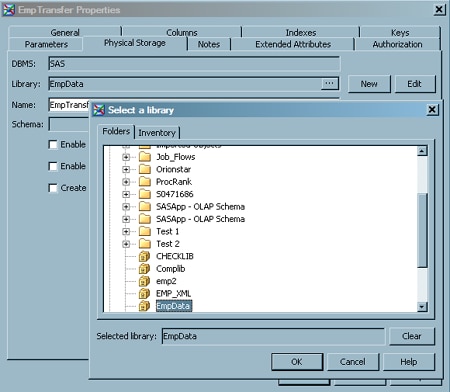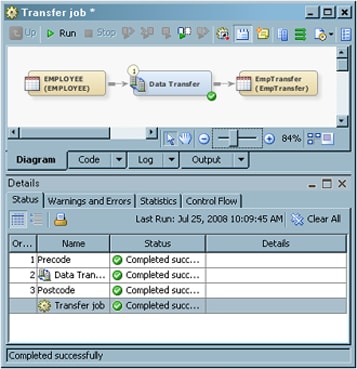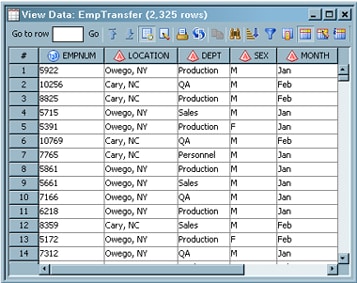Moving Data Directly from One Machine to Another Machine
Overview
A Data Transfer transformation
is a transformation that you can use to move data directly from one
machine to another. Direct data transfer is more efficient than the
default transfer mechanism.
You can use SAS Data
Integration Studio to create a process flow diagram that moves data
from the source table on one machine to the target table on another
machine. By default, SAS Data Integration Studio generates code that
moves the source data from one machine (machine 1) to another (machine
2). Then, it moves the data from machine 2 to the target table on
a third machine (machine 3). This action is an implicit data transfer.
For large amounts of data, an implicit data transfer might not be
the most efficient way to transfer data.
To improve efficiency,
you can add a Data Transfer transformation to the process flow diagram.
The transformation enables SAS Data Integration Studio to generate
code that migrates data directly from the source machine to the target
machine. You can use the Data Transfer transformation with a SAS table
or a DBMS table with table and column names that follow the rules
for SAS names.
Solution
You can use the Data
Transfer transformation to perform a direct data transfer between
source and target tables that reside on different machines. By default,
SAS Data Integration Studio generates code that moves the source data
from one machine (Machine 1) to another (Machine 2). Then, it moves
the data from Machine 2 to the target table on a third machine (Machine
3). This action is an implicit data transfer. For large amounts of
data, an implicit data transfer might not be the most efficient way
to transfer data. Perform the following tasks to transfer the data
directly from Machine 1 to Machine 3:
Tasks
Create and Populate the Job
-
Because you want to have a permanent target table to contain the output for the transformation, right-click the temporary work table attached to the transformation and click Replace in the pop-up menu. Then, use the Table Selector window to select the target table for the job. The target table must be registered in SAS Data Integration Studio.The following display shows a sample process flow diagram for a job that contains the Data Transfer transformation.




